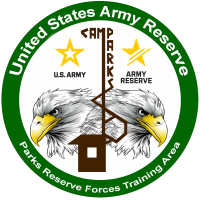 The Army is committed to protecting special-status wildlife species and their habitats at PRFTA by complying with all applicable Federal, State and local regulations that include but are not limited to, the Endangered Species Act, National Environmental Protection Act, and various Army regulations. The Endangered Species Act mandates all federal agencies to use their authority to carry out programs that conserve listed species and the ecosystems on which they depend. Army Regulation 420-74 requires the Army to take active measures to avoid jeopardizing listed species and to increase population of these species. All visitors to PRFTA, including civilians and military personnel, are required to comply with these regulations that protect special-status wildlife species and their habitat. Military training and field exercises at PRFTA will be conducted in a manner that will least endanger the environment while still accomplishing training objectives.
The Army is committed to protecting special-status wildlife species and their habitats at PRFTA by complying with all applicable Federal, State and local regulations that include but are not limited to, the Endangered Species Act, National Environmental Protection Act, and various Army regulations. The Endangered Species Act mandates all federal agencies to use their authority to carry out programs that conserve listed species and the ecosystems on which they depend. Army Regulation 420-74 requires the Army to take active measures to avoid jeopardizing listed species and to increase population of these species. All visitors to PRFTA, including civilians and military personnel, are required to comply with these regulations that protect special-status wildlife species and their habitat. Military training and field exercises at PRFTA will be conducted in a manner that will least endanger the environment while still accomplishing training objectives.
"Enabling Training Through Environmental Stewardship"
PRFTA covers about 2500 acres and supports a number of habitat types: grasslands, riparian forest, seasonal wetlands, seeps/springs, and ponds. These habitats in turn support a diversity of wildlife species, many of which are legally protected under state and federal Endangered Species Acts or other regulations or are considered sufficiently rare by scientists to qualify for such listing. Three of these species (California tiger salamander and red-legged frog, Congdon's tarplant) are considered endangered by the federal Endangered Species Act.

The areas directly bordering PRFTA have similar habitat types and include grasslands, riparian drainages, wet meadows, valley and foothill woodlands. Grassland is the primary plant community found at PRFTA. It is typically made up of perennial bunchgrasses and annual plant species with a few trees and shrubs. California grasslands have changed significantly since the European settlement and introduction of many exotic plant species. The California grassland system is now composed of non-native annual grasses, annual forbs and perennial forbs. Common grasses include soft chess, wild oat, ripgut brome, and Italian ryegrass. Forbs that are found within this community include yellow-star thistle, fiddleneck, California poppy, field bindweed, arrowleaf balsamroot, and Ithuriel's spear. A few trees are also found in this community: valley oak, eucalyptus, and pepper tree. The installation has small areas of riparian forest along its larger drainages. Riparian species typically grow along streams and rivers and the plant species require more soil moisture than other species. Riparian habitat has decreased 90% in California. Wet meadows are one common type of wetland on PRFTA and found along the bottoms and edges of drainages, near pond margins, and in depressions within the annual grassland habitat. PRFTA presently has four artificial (man-made with earthen dams) ponds in the training area.
 Flora surveys at PRFTA focused on special-status plant species that are more likely to occur on the installation based upon its location within the two counties and the types of habitat that exist and none of the four federally listed species that have the potential to exist have been found on the installation.. Congdon's tarplant is the only rare plant that has been found on the installation to date. There are a number of special-status animal species, including several federally listed species, which have been identified by the FWS as species that could occur in Alameda and Contra Costa Counties Only two federally listed species have been observed: the California red-legged frog and the California tiger salamander. Although no kit foxes have been observed on the installation, it is possible for them to be found in the future.
Flora surveys at PRFTA focused on special-status plant species that are more likely to occur on the installation based upon its location within the two counties and the types of habitat that exist and none of the four federally listed species that have the potential to exist have been found on the installation.. Congdon's tarplant is the only rare plant that has been found on the installation to date. There are a number of special-status animal species, including several federally listed species, which have been identified by the FWS as species that could occur in Alameda and Contra Costa Counties Only two federally listed species have been observed: the California red-legged frog and the California tiger salamander. Although no kit foxes have been observed on the installation, it is possible for them to be found in the future.
There are developed areas within both the cantonment and the training areas. The cantonment area consists primarily of landscaped and highly disturbed areas due to previous development. PRFTA also has a large burrowing owl population in both its training and cantonment areas.
DOCUMENTS





